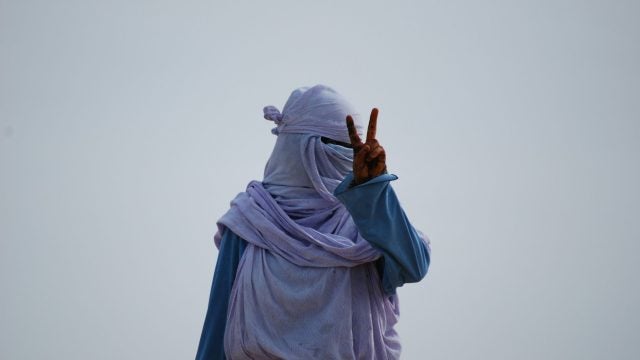
Title: Prosecution and Prevention: Strategies for a War on Torture
State-sanctioned torture of citizens is still a regular occurrence to which attention must be drawn as some nations are allegedly “turning a blind eye” to this issue.
Although one might consider the subject of torture to be not as relevant in the twenty-first century as it was in the Middle Ages, many countries in East Asia are reportedly overwhelmed by the extent of the problem. For example, torture is institutionalized in Indonesia; it has become a source of income for police officers because individuals bribe them to escape from worse or additional torture. Burma and the Philippines are dealing with similar issues. Even a modern democratic country like South Korea does not have a clear legal definition of torture and needs legal reforms to eliminate the practice.
South Asia is experiencing similar difficulties. Bangladesh, India, and Sri Lanka are reportedly dealing with institutionalized torture. Nepal is said to be poorly implementing its laws against torture. One example is the kidnapping, torture, and murder of a fifteen-year-old girl named Maina Sunuwar by Nepal Army soldiers in 2004. The authorities were looking for her mother, Devi Sunuwar, who had previously witnessed the gang rape and murder of her niece by Nepali security forces; as Devi was not home, the soldiers took Maina to the Birendra Peace Operations Training Centre in Panchkhal, where she was tortured. Her head was submerged in water for one-minute intervals and she had electric shocks applied to her feet. She died shortly after the “interrogation process.” Furthermore, in Pakistan, torture is apparently “commonly used to obtain confessions” from people in custody.
Despite the UN’s best efforts to prevent the situation from escalating, the number of people prosecuted for torture is increasing every year. Cases include China and Uzbekistan, as well as those involving the illegal killings and disappearances in countries like Chile, Argentina, Cambodia under the Khmer Rouge, the former Yugoslavia, and Rwanda. Even though the increase in the number of torturers being captured and prosecuted is a result of successfully ending impunity in some cases, the ultimate goal (the ending of torture altogether) is still far from being achieved, as it remains prevalent throughout the world. It is in the best interest of both countries and individuals when both national and international courts work towards the goal of ending torture because it makes the prospect of “getting away with it” less likely for perpetrators.
Methods of torture still used on modern day citizens who are “unlucky” enough to be targeted include extraction of fingernails with heated pliers, waterboarding (simulating drowning), electric shocks (to nerve rich areas like the genitals), barbed wire floggings, branding iron, forced abortions (for women), cutting of flesh, toe smashing, deprivation of sleep, and restricting the use of toilets.
Since the 1970s, the fight against torture has developed into a two-pronged strategy. One approach has been combating impunity by prosecuting perpetrators of torture as in the Chile, Argentina, and Rwanda cases; through legal proceedings one can break the vicious cycle of impunity, which would result in a preventive effect (the UN Convention against Torture is an advocate of this philosophy). Another method used has been independent visits to places of detention to establish a relationship of trust with the relevant authorities (the Optional Protocol to the UNCAT is based on this viewpoint). If any lesson has been learned since the 1970s until today regarding this fight, it is that torture is an ongoing occurrence that cannot be stifled by a unilateral approach.
Perhaps the first real step in the fight against torture might be the reeducation, sensitizing, and involvement of citizens, as well as more transparency in the governing system and better checks and balances on power. Reeducation and sensitizing could start in schools, where children would be taught the value of human life and that it is wrong to mistreat a fellow man. More transparency in the governing system might be obtained by reports drawn up by organizations protecting civil rights on the monthly or yearly activities of the governing body.
One practical solution that should be supported by the international community is the creation of human rights centers inside nations that have gross human rights violations, to give the citizenry a means of recourse and redress to their governments, with the hope of enacting gradual and positive change through peaceful recourse.
Historical precedent indicates that people will only stand being abused for so long. The annals of history record these examples: the fall of communist regimes, the abolishment of slavery, the English Bill of Rights denouncing “cruel and unusual punishment” (later adopted by the 8th Amendment to the United States Constitution), and the Magna Carta. If an end to torture is in sight, then it might come either through international effort to implement the legal frameworks against this atrocity or through the not so peaceful counter actions of the oppressed.
Image Credit: Clayton Tang, CC BY-SA 3.0 <https://creativecommons.org/licenses/by-sa/3.0>, via Wikimedia Commons
This is an archived article. While every effort is made to conserve hyperlinks and information, GJIA’s archived content sources online content between 2011 – 2019 which may no longer be accessible or correct.
More News

This article analyses the distortions of the International Humanitarian Law (IHL) notion of proportionality in the context of the Israel-Gaza war. It discusses Israel’s attempts to reinterpret proportionality to justify…

The escalating women’s rights crisis in Afghanistan demonstrates a gap in international legal protections of the rights of women and girls. The international community should fill this gap by making…

This article situates Bangladeshi and Global South feminist praxis, a process by which theory is realized into action, within broader critiques of international law by Third World Approaches to International…